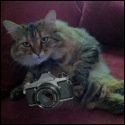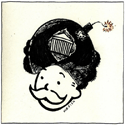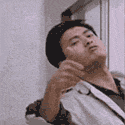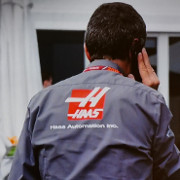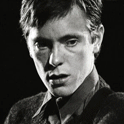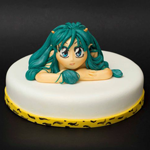|
Does anyone here know what the different flash options for the Olympus stylus f/3.5 mean? There's: Auto Auto-S Fill-In i'm having fun with it so far.
|
|
|
|

|
| # ? May 30, 2024 00:05 |
|
Does anyone have any suggestions for a good film to use for underwater purposes? I've been using TriX for B&W and whatever cheap Fuji I can find for color negative, but I'm not really happy with the results. I'd like to find something that's got a high resolution and leans toward the warm end of the spectrum to help counter all that drat blue.
|
|
|
|
squidflakes posted:Does anyone have any suggestions for a good film to use for underwater purposes? I've been using TriX for B&W and whatever cheap Fuji I can find for color negative, but I'm not really happy with the results. Kodak Portra 400VC?
|
|
|
|
squidflakes posted:Does anyone have any suggestions for a good film to use for underwater purposes? I've been using TriX for B&W and whatever cheap Fuji I can find for color negative, but I'm not really happy with the results. You'll need a strobe to get decent underwater pictures. It is way superior to any onboard flash. I love Ikelights, I have a 50w on an optical slave for a p+s in a diving case I have, and a 100w that generally goes on a Nikonos V. The water will still be blue, but you can get more natural colors near fish/objects. Digital is kind of nice here because you can get used to adjusting the output of the flash and see what you're getting in realtime. You have to be careful, because if you strobe too hard you'll basically introduce a lot of color into the pic. I'm guessing the coral is naturally very bright and the light is too blue to see it. (apologies if you already have a strobe rig) Paul MaudDib fucked around with this message at 23:22 on Jan 19, 2010 |
|
|
|
Paul MaudDib posted:(apologies if you already have a strobe rig) I do, but all the shooting I've been doing lately has been at a depth of 6 feet or less and the strobe is difficult to handle. I was hoping I could get away with using ambient in full sun, but I may just have to figure a different way to mount the strobe.
|
|
|
|
squidflakes posted:I'd like to find something that's got a high resolution and leans toward the warm end of the spectrum to help counter all that drat blue. Seconding the Portra. Though if its bright maybe the 160 will work too? I'm sure you can find a warming filter for cheap nowadays too.
|
|
|
|
squidflakes posted:I do, but all the shooting I've been doing lately has been at a depth of 6 feet or less and the strobe is difficult to handle. I was hoping I could get away with using ambient in full sun, but I may just have to figure a different way to mount the strobe. Difficult to handle how? The best way is a frame setup - it's got a tray for the camera body and an arm for a lens. I don't know how your gear is set up, but it should be something like that?
|
|
|
|
guidoanselmi posted:Seconding the Portra. Though if its bright maybe the 160 will work too? The 160 would probably be better for the light I'm usually shooting in. High noon sun, about 3 feet under water. When using ISO 400 I was at f18 1/200 and would have really liked to open that up more.
|
|
|
|
Anyone have any recommendations for the best auto focus canon? EDIT: Doesnt have to be canon actually, would like a bit of film auto focus to accompany my A1 and possibly new bessa.
|
|
|
|
fronkpies posted:Anyone have any recommendations for the best auto focus canon? EOS 3 if you wanna spend a little for a pro level camera. I highly reccomend getting one with a power booster or battery grip, so you don't have to pay 10 bucks a pop for those little photo batteries. I use rechargable AAs in mine with the battery grip. There's lots of cheap as dirt entry level slrs on keh and similar sites. Though keep in mind the lenses for these cameras are going to be much more expensive than the lenses for your A1. I'd really only reccomend it if you also have a canon digital slr (they use the same lenses).
|
|
|
|
Forget it, Canon 1v it is, cant help being a James Nachtwey fanboy can you.Stregone posted:EOS 3 if you wanna spend a little for a pro level camera. I highly reccomend getting one with a power booster or battery grip, so you don't have to pay 10 bucks a pop for those little photo batteries. I use rechargable AAs in mine with the battery grip. The 3 sounds good but there harder to find than the 1v's, though there basically identical in specs. How is the battery life by the way? Thats the only thig that makes me think twice. fronkpies fucked around with this message at 21:26 on Jan 21, 2010 |
|
|
|
The EOS A2E is a strong value for the price. It also has built-in AF assist. The downside is that it takes 2CR5 batteries.
|
|
|
|
fronkpies posted:Forget it, Canon 1v it is, cant help being a James Nachtwey fanboy can you. The battery grip I have uses 4 AAs. I don't think it lasts as long as the non-rechargeable lithiums, but I think it was about 10-15 rolls. I usualy only shoot 2-4 rolls per outing so it lasts a long time, plus I have two extra sets of batteries in my bag because my flash uses 4 AAs as well. I usualy change and recharge the batteries after an outing or two anyways so they don't die on me when i'm out and about.
|
|
|
|
Oh hey film thread. Don't mean to derail any discussion but I'm looking for some insight. I just got my first decent film camera to play with, and am currently trying to figure out how it all works. The camera in question is a Canon Rebel GII. I've read through this entire thread (took me a few nights, jesus) and got a lot of good info, but still have a few things bothering me. I saw a lot of mention in this thread to pushing/pulling film and have figured out, I think, how it works and how its done. But I'm wondering "why?" Is there a noticeable difference between shooting 400 at 800 and just shooting 800 from the beginning? Maybe there's a quick reference some one can point me to that I've missed on my way here? Also, how do you guys go about digitizing film? Is there a decent negative scanner out there that won't cost me a limb? Is it possible to scan developed prints and make them not look like poo poo? (see below) And actually, should I take them anywhere specifically to be printed, if I'm not doing them myself? I think I may also leave these here, if some one wouldn't mind looking and lending some feedback. I feel like the photo-a-day thread is more geared toward digital?  Click here for the full 1024x683 image.  Click here for the full 1024x675 image.  Click here for the full 683x1024 image. Thanks in advance film goons.
|
|
|
|
unSavory posted:
Pushing and pulling. Well first things first the difference between 400 and 800 might be enough enough to get you a high enough shutter speed to avoid camera shake. The other important thing it provides is pushing increases contrast and pulling reduces it. This is useful with b&w film. If you find yourself in a high contrast lighting situation pulling a few stops might make things a bit less harsh. Pushing on the other hand can provide some contrast.
|
|
|
|
unSavory posted:
Classic beginner faux pas-why is there a tree growing from your friends backpack? It's a problem I struggle with. Your eye sees what interests you but the drat camera sees and records everything. It's even worse through the viewfinder. Walk around about 3 steps either way and the tree would be gone.
|
|
|
|
unSavory posted:Oh hey film thread. Don't mean to derail any discussion but I'm looking for some insight. It's mostly convenience: you can buy a versatile ASA 400 B&W film like Tri-X/Arista 400 Premium/HP5 and be covered from ASA 200-3200 (and beyond). Also, the specialty high-speed films are more expensive and generally not much better than pushed film, the "1600" films are actually only rated at 1000 and you are pushing them in the box development times anyways. I use an Epson V500, which can be found used for around $150 or so. It's not as nice as a dedicated 35mm scanner, but does a reasonably good job and also does medium format. Most of us scan negs because it saves money over printing and then scanning, plus you are at the mercy of the photo tech and their digitzation/printing workflow if you're scanning from prints. PAD and SAD are both film-friendly, those threads are more about the images themselves than the process. It's not like somebody's gonna be all like "Nice film shots, GRANDPA
|
|
|
|
Gnomad posted:Classic beginner faux pas-why is there a tree growing from your friends backpack? Who are you to question those that like to take their greenspace with them?
|
|
|
|
unSavory posted:
From what I've read (I've never done any pushing or pulling w/ film myself) and in my (limited) experience in digital, you push exposure when you want to be able to shoot with a particular shutter/aperture but the lighting isn't letting you. For instance, if you want to shoot low light action but all you have is ISO200 film or you want to shoot with a large DOF (small aperture) in a cathedral somewhere but are sans tripod. Pushing allows you make up some amount of underexposure (vice versa for pulling). The biggest reason I can imagine is that you already have a half finished roll in your camera and you don't want to waste it all (admittedly, you can't really push process half of a roll), or you're stuck somewhere with just a certain speed of film and an shot opportunity presents itself. The difference between higher ISO and lower is the grain size. Basically, bigger grains catch more light, thus making the film more sensitive. I believe that the push processing exposure gain has a trade off of larger grain and more contrast. I have an Epson V300 and it serves my purposes well enough (well not really anymore since I just got a crown graphic... but it handles 135 just fine), and it was cheap. Only downside is that it only takes 6 negatives at once in the supplied film holder tray thing, but you can probably get a previous generation scanner for super cheap that takes umpteengazillion negatives at once, I'm actually searching around for one that will do 4x5's, due to aforementioned outgrowing of current scanner. But I'm no pro so the has been V300 fine for me, but you should really think about what you shoot and what quality level you need and then buy gear around that.
|
|
|
|
HPL posted:Who are you to question those that like to take their greenspace with them? Treenappers!
|
|
|
|
Gnomad posted:Classic beginner faux pas-why is there a tree growing from your friends backpack? This might be the best advice I've gotten since getting into this. I mean I PUT IT THERE ARTISTIC LICENSE HOW DARE YOU. ehhem. Also thanks for the clarification on push/pulling. I didn't know if I was missing something big or what. On to the next thing I guess, is the guy at walgreens going to develop my film right? Or should I suck it up and buy a canister?
|
|
|
|
unSavory posted:Also thanks for the clarification on push/pulling. I didn't know if I was missing something big or what. On to the next thing I guess, is the guy at walgreens going to develop my film right? Or should I suck it up and buy a canister? Get some black and white developing gear. It's shockingly simple.
|
|
|
|
unSavory posted:Also thanks for the clarification on push/pulling. I didn't know if I was missing something big or what. On to the next thing I guess, is the guy at walgreens going to develop my film right? Or should I suck it up and buy a canister? Black and white is pretty easy to develop on your own. Developing color at home is also do-able, but a lot more difficult (more chemicals, and the temperature tolerances are much tighter), so you'll probably still be going to Walgreens if you do color. My experiences with CVS have been almost uniformly negative, which pushed me into shooting B&W and scanning my own film. $10-15 worth of chemicals will last you like 6 months (unless you're doing really high-volume shooting) and Arista's B&W film is quite inexpensive. It's all re-branded film from other manufacturers, you can Google around to find out what's what. My personal favorite is the Premium 400, which is Kodak Tri-X at $2.19 per 36exp roll. I wish they'd get off their asses and start stocking 120 and 4x5 versions of it
|
|
|
|
Well I guess thats that, then. I'll definitely be giving it a shot. Thanks everyone.
|
|
|
|
GrAviTy84 posted:From what I've read (I've never done any pushing or pulling w/ film myself) and in my (limited) experience in digital, you push exposure when you want to be able to shoot with a particular shutter/aperture but the lighting isn't letting you. For instance, if you want to shoot low light action but all you have is ISO200 film or you want to shoot with a large DOF (small aperture) in a cathedral somewhere but are sans tripod. Pushing allows you make up some amount of underexposure (vice versa for pulling). The biggest reason I can imagine is that you already have a half finished roll in your camera and you don't want to waste it all (admittedly, you can't really push process half of a roll), or you're stuck somewhere with just a certain speed of film and an shot opportunity presents itself. The difference between higher ISO and lower is the grain size. Basically, bigger grains catch more light, thus making the film more sensitive. I believe that the push processing exposure gain has a trade off of larger grain and more contrast. And awesomely enough, one really common developer for pushing 400 films is Diafine. Diafine is an awesome magic developer. Film goes in, you let it sit for an hour, film comes out. It is insensitive to time and temperature presuming you allow adequate time. So you really can shoot half a roll at 2 different speeds. What are people's magic pushing formulas? I got decent results from 1 hour stand dev in Rodinal 1:100 for TX400@1600. They came out a little flatter than EI400, as you might guess. It works but I'm not thrilled with it. Normally it prints with a grade 3 filter at EI400 but I had to drop pretty low to get them to print right. 35mm is slightly more difficult to print, I think. My comparison is between a roll of 35mm (00 filter) and a 120 (0 filter) in HC-110 dilution H with a long time (~30 mins I think?). I found the Rodinal to be a little better, I think it was a 1 or a 1.5. I'm interested in any tips you guys might have. Does scanning allow you better control over contrast versus printing? I'd like to push harder, I know other people have, but I seem to be losing control of it even at 1600. 
|
|
|
|
unSavory posted:Also thanks for the clarification on push/pulling. I didn't know if I was missing something big or what. On to the next thing I guess, is the guy at walgreens going to develop my film right? Or should I suck it up and buy a canister? quote:I'm interested in any tips you guys might have. Does scanning allow you better control over contrast versus printing? I'd like to push harder, I know other people have, but I seem to be losing control of it even at 1600.
|
|
|
|
Paul MaudDib posted:And awesomely enough, one really common developer for pushing 400 films is Diafine. Why do you leave your film in Diafine for an hour? It needs like, 5 minutes, in each part tops.
|
|
|
|
killabyte posted:Why do you leave your film in Diafine for an hour? It needs like, 5 minutes, in each part tops. An hour is just what I've heard for big pushes. I don't own any, I can't find it locally and I've been putting off ordering.
|
|
|
|
Paul MaudDib posted:I'm interested in any tips you guys might have. Does scanning allow you better control over contrast versus printing? I'd like to push harder, I know other people have, but I seem to be losing control of it even at 1600. NO I used to post negative scans of all my shots before I got to be competent at printing. Now I won't post anything that's not a print. I've got a pretty good negative scanner and everything. It's fine for color, but true B&W film really fools it. I don't have any neg scans duplicated in my port to make a comparison right now, but I'll post them when I get home. If you want the best quality, make a nice print and flatbed scan it.
|
|
|
|
McMadCow posted:NO Id love to get into wet printing, but it just seems to big, all the room for the enlarger and trays, not to mention it having to be completely light proof, also the initial cost looks to be quite high. One day hopefully.
|
|
|
|
McMadCow posted:NO You may have already heard this or not, but if your scanner has an infrared channel turn it off when scanning b+w. This is Epson's ICE, for example. Essentially, the infrared channel is blocked by dust/scratches so the software can fix them automatically. Unfortunately, it was designed for C-41, and the silver in b+w film blocks it too.
|
|
|
|
Paul MaudDib posted:You may have already heard this or not, but if your scanner has an infrared channel turn it off when scanning b+w. This is Epson's ICE, for example. Essentially, the infrared channel is blocked by dust/scratches so the software can fix them automatically. Unfortunately, it was designed for C-41, and the silver in b+w film blocks it too. Interesting. My neg scanner doesn't have a control for an infrared channel. It's a few years old now, though (Konica Minolta Dimage ScanDual IV). Pretty sure my flatbed doesn't have an IR channel either, but it seems to behave pretty well with my prints. Not ALL negs come out looking crappy in my Konica, but most do, and even the good ones don't have nearly the range of a print, and PS doesn't have the capacity to improve on it enough that I'll use them anymore.
|
|
|
|
Paul MaudDib posted:An hour is just what I've heard for big pushes. I don't own any, I can't find it locally and I've been putting off ordering. Leaving your film in the Diafine (1 hour in each part, or 30 mins in each?) for an hour is totally pointless. It's probably not harming anything but thats just making your dev take longer. The diafine, unlike developers like Xtol or D76, exhausts itself in the film pretty quickly.
|
|
|
|
Am I the only person who uses D76? 
|
|
|
|
Pompous Rhombus posted:Am I the only person who uses D76? No, but I like Xtol a whole lot more. My 3 developers are Xtol, Rodinal, and Diafine.
|
|
|
|
Pompous Rhombus posted:Am I the only person who uses D76? I used it for the longest time, but Ilfosol is where it's at these days.
|
|
|
|
Pompous Rhombus posted:Am I the only person who uses D76? Oh I use it a decent amount, I really have no complaints.
|
|
|
|
killabyte posted:Leaving your film in the Diafine (1 hour in each part, or 30 mins in each?) for an hour is totally pointless. It's probably not harming anything but thats just making your dev take longer. The diafine, unlike developers like Xtol or D76, exhausts itself in the film pretty quickly. Yeah. 5 mins in part A, 5 in part B. Ta-daaaaaaaaaaa.
|
|
|
|
Pompous Rhombus posted:Am I the only person who uses D76? I use ID11 which I hear is really similar. But I'm also really new to this and haven't really branched out.
|
|
|
|

|
| # ? May 30, 2024 00:05 |
|
Pompous Rhombus posted:Am I the only person who uses D76? I'm still on my first bottle of HC-110 I bought almost a year ago. I also have 32 1 gallon cans of microdol-x I haven't touched yet. I won't need developer for a long rear end time. I kinda wanna experiment, but HC-110 is so freaking thrifty, and I am poor right now. 
|
|
|





